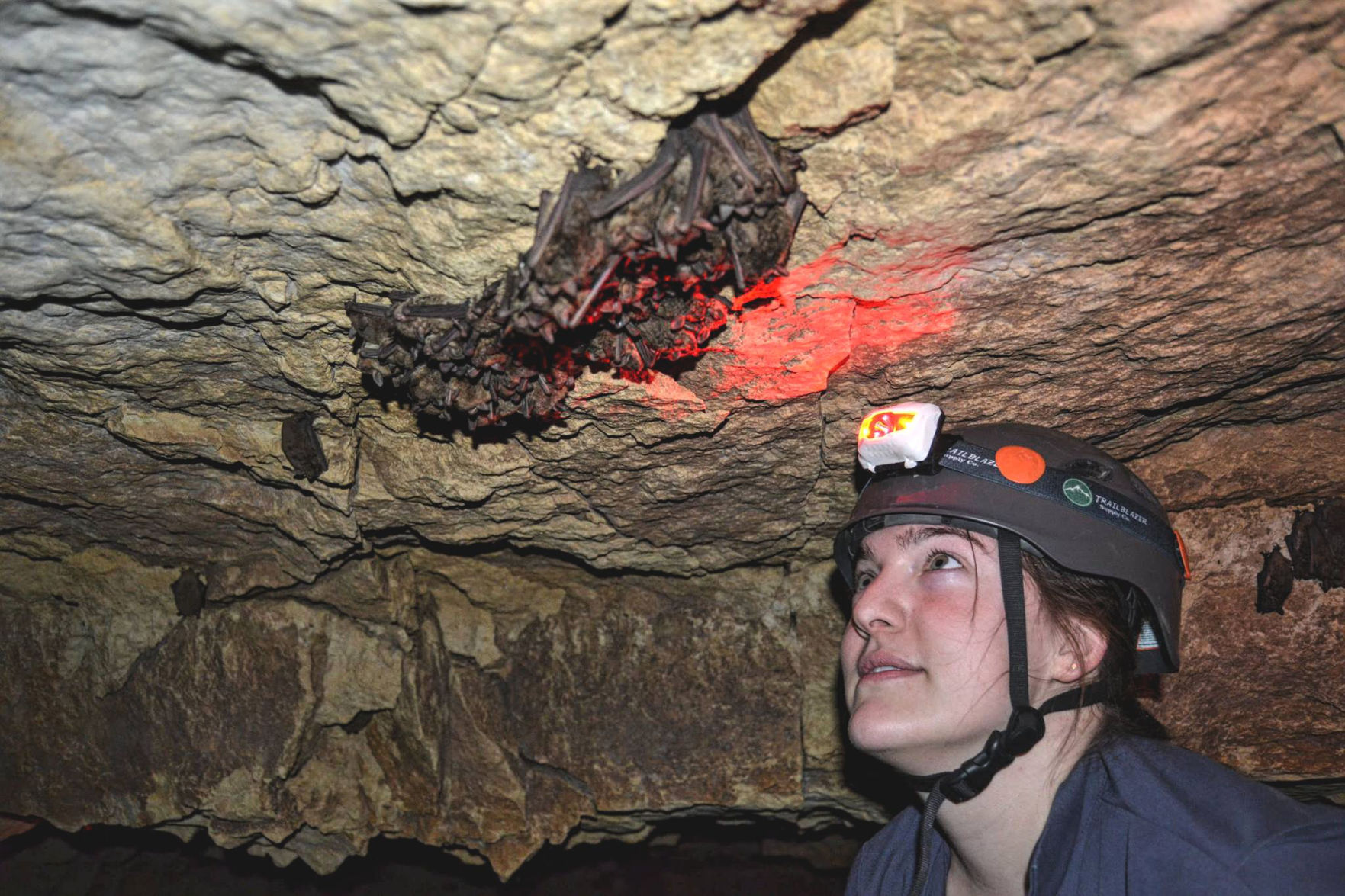What are bat wings made of? How are bats different from birds? What is the oldest bat in the world?
These were some of the questions Melissa Meierhofer, research associate with Texas A&M AgriLife Research based in College Station, was asked recently by a third-grade class at Wells Elementary School in Wells, Nevada, during her first Skype a Scientist experience.
Meierhofer, who is affiliated with the Texas A&M Natural Resources Institute, is also a doctoral student in the wildlife and fisheries department of Texas A&M University’s College of Agriculture and Life Sciences. This past semester, she signed up to participate in the volunteer Skype a Scientist program as a way to share her knowledge of bats and other mammals with students throughout the U.S.
“I found out about the Skype a Scientist program through Twitter,” she said. “The program provides students and others the opportunity to get to know a real scientist and lets scientists reach audiences throughout the country without having to leave their lab or office.”
Meierhofer said she submitted a short professional profile to the program website and provided information relating to her particular area of scientific expertise, plus the grade or age level she preferred to reach. She chose primarily to connect with students from kindergarten through 12th grade and gave her expertise as “biology, mammals and mammalian diseases.”
The program database matches scientist information with teachers’ lesson plans, Meierhofer said.
“You get a notification and then you contact the teacher to discuss what is needed and set up a specific date and time,” she said. “At the agreed-upon time, you Skype into the classroom for a 45 to 60 minute question and answer session on your work and experience as a scientist.”
Jim Cathey, associate director of the Texas A&M Natural Resources Institute, College Station, said distance learning is a smart and efficient way of relaying science-based information.
“Skype a Scientist proved to be a great vehicle to connect students with Melissa, our resident bat expert,” Cathey said. “Who knows what the payoffs will be from the interaction, but this was a good way to share experiences and relay the challenges faced by bats—and what scientists do to collect information in the field. Melissa may have inspired our next generation of scientists who will find smart solutions to natural resource problems.”
Meierhofer’s work with the Natural Resources Institute includes collecting baseline data on the distribution of hibernating, or overwintering, bats in Texas, and documenting the characteristics of the environment they inhabit prior to the appearance of white-nose syndrome, a disease deadly to bats.
“White-nose syndrome, a known disease in Europe was recently and accidentally introduced in North America,” she explained. “Having little immunity to this novel disease, it affects hibernating bats and has no direct negative health impact on humans. But because North American bats have never been exposed to the disease, it has devastated bat populations in the eastern U.S., and the fungus that causes the disease has been found in Texas by our team.”
She said Texas, with 32 bat species, has the greatest bat fauna diversity in the U.S., and bats play an important role in controlling insect populations that pose threats to Texas crops as well as assist in crop pollination.
”The loss of bats is estimated to have a negative economic impact on U.S. agriculture of at least $3.7 billion annually,” she said. “And recent studies indicate the value of insect control by bats to Texas agriculture is $1.4 billion annually in terms of fewer crop losses from insects, reduced disease and less pesticide use.”
Meierhofer said because her presentations are typically given to adult audiences she had to revise her usual PowerPoint to a more age-appropriate level.
“The kids were really interested and engaged, and they even asked me about white-nose syndrome, which I didn’t expect,” she said. “Apparently their teacher prepared them before I skyped into the classroom.”
Meierhofer said she told the students about large and small bats and how Nevada had a lot of the same bats as Texas.
“The students had some very interesting questions and observations,” she said. “They asked a lot of questions about bats I hadn’t thought of or addressed in a long time, like ‘What are bat wings made of?’”
Third-grade teacher Jennifer Rodriguez made the bat presentation into a class project from which the students created a booklet of thank-you letters and drawings to send to Meierhofer.
“That was a really special thing for them to do and you could tell the students put a lot of work into it,” she said. “I really enjoy educational outreach and connecting with the community, so it’s great to have another way to connect with people and share my expertise and experiences as a scientist.”


